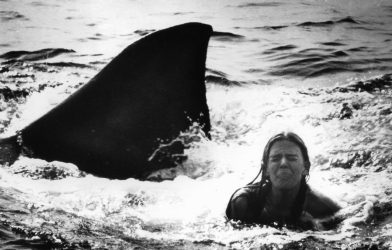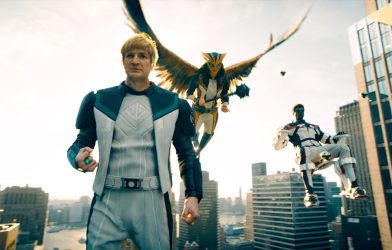
Kevin Costner at the U.S. premiere of “Horizon: An American Saga — Chapter 1” on June 24 in Los Angeles.
Frazer Harrison/Getty Images
Kevin Costner has been defying the odds for more than 40 years.
After filming numerous flashback scenes for 1983’s The Big Chill, the movie that was poised to be his big break, he learned he had been cut out of the film entirely… but then that film’s director, Lawrence Kasdan, decided to give him another shot, casting him in a plum part in 1985’s Silverado, which made him a star.
Not long after, as a burgeoning A-lister, he was warned to avoid baseball movies because they rarely did business at the box office… but then he decided to make two of them within a year of each other, 1988’s Bull Durham and 1989’s Field of Dreams, and both turned out to be blockbusters.
More recently, after decades in the spotlight, his big screen career was flagging, and he signed up to star on a television series that would air on a channel that most Americans didn’t even realize existed… but then, soon after debuting in 2018, became the biggest hit on TV, Yellowstone.
It’s no wonder that Costner developed considerable confidence in himself.
But that confidence, in turn, has led him to repeatedly violate Hollywood’s golden rule for movie stars: “Never, ever invest your own money in a movie.”
The first film for which Costner dug into his own pocket was Dances with Wolves, an epic western that came along at a time when that genre had been written off for dead. After reading the script, he attached himself as a producer and star, and sought a director and distributor. When prospective partners argued for eliminating key scenes in order to lower the film’s prospective cost and runtime, and against having Native American characters speak in Lakota or Pawnee for one-third of the film, which would necessitate subtitles, he fought back. In the end, he took on the job of directing the film himself and personally put up $3 million of its $19 million budget.
It was a crazy gamble, but one that paid off in a major way: the film, released in 1990, ultimately grossed $184 million worldwide (of which he reportedly pocketed $50 million) and won seven Oscars (including best picture and director for himself).
In hindsight, that may have been both the best and the worst thing that ever happened to Costner.
Emboldened by his success at gaming “the system,” Costner would, in the ensuing decades, repeatedly put chunks of his fortune — or, as he refers to it, his “pile” — on the line in pursuit of projects that the system would not support, to varying degrees of success.
1995’s Waterworld, which he produced, starred in and fought for his then-friend Kevin Reynolds to direct, was the first movie with a budget of more than $100 million ($13 million for his salary), which instantly put a target on it. Its cost soon ballooned far beyond that, not least because of the hurdles of filming on the water, something that Steven Spielberg had learned about 20 years earlier on Jaws.
When a hurricane struck the film’s Hawaii location, sinking its principal set, Costner, whose reputation was on the line, decided to double-down. Reports differ about the specifics — some say he invested $22 million of his money to rebuild the sunken set; he has acknowledged giving up his back-end deal (which entitled him to 15 percent of any gross profits) in order to keep the film on track (because, he said, “I just didn’t want to be embarrassed when the film opened”).
But the bottom line is that well before the film was completed, it was being derided in the press as “Kevin’s Gate,” “Fishtar” and “Costner’s Waterloo.” And in the end, it cost $175 million — $235 million, if one includes marketing and distribution costs — but grossed just $88 million. Costner frequently insists that it has “paid for itself multiple times” when one factors in ancillary sales. Regardless, it’s unclear if he personally ever got his money back.
Years after Dances with Wolves, Costner finally returned to the director’s chair — in addition to taking on producing and acting responsibilities — on the 1997 dystopian sci-fi epic The Postman and another western, 2003’s Open Range. Though the specifics are hazy, it has been reported that Costner put some of his own money into The Postman, which had an $80 million budget but grossed just $17.6 million worldwide; and that he took no salary for Open Range (in favor of a back-end deal), which returned $68.3 million worldwide on a $22 million budget.
Then, in 2014, he fell in love with Black or White, a script about racial tensions in 21st century America written by Mike Binder, who had previously directed him in 2005’s underappreciated The Upside of Anger, and sought financing to get it made with him as the lead. Nobody bit — Costner’s stock wasn’t particularly high at the moment — so he decided to foot the entire cost of $9 million himself. The film ultimately grossed $21.8 million, so it’s all but certain that, in this case, he was made whole.
In the meantime, Costner had also begun to invest money in things unrelated to film. When I sat down with him in 2014 to discuss Black or White, he told me that he had also put “about a million dollars” into financing The Explorer’s Guild, a multi-part book that he wrote with Jon Baird and described as “maybe one of the great novels of this century.” The book’s first volume was published the next year, and while there is no publicly-available information on how well it sold, we have yet to hear anything about a second volume.
He also told me about two “oil-water separator” businesses that he had acquired in the early 1990s and built up over the years since, investing a total of $35 million of his own money. That seemed rather out-there, but sure enough, following the Deepwater Horizon oil spill in the Gulf of Mexico in 2010, BP spent $52 million for the use of Costner’s devices.
And, during that conversation a decade ago, we also discussed the project that would eventually become Horizon, which Costner had been thinking about since 1988. He said of it at the time, “I have another Western that’s about 10 hours long. What am I supposed to fucking do with that? I have an idea about what to do with it. You know, if I had my druthers, it would be a true serial [multi-part] thing. It would come out on Memorial Day [part one], come out on Thanksgiving [part two], come out on Fourth of July [part three], and then come out on Christmas [part four] — four within an 18-month period. I think that would be a very interesting way.”
Sure enough, Horizon — which Costner co-wrote with the aforementioned Baird, and ultimately produced, directed and stars in — ended up as a four-part film series, with Chapter 1, which hits theaters today, set to be followed just seven weeks from now, on Aug. 16, by Chapter 2, whether or not Chapter 1 performs or bombs (reviews and box-office tracking have been pretty bleak), with Chapter 3, which is not yet fully-financed but has already begun filming, and Chapter 4 intended to follow sooner rather than later.
If that sounds like an unusual rollout plan, that’s because it is, and it’s at least partly why financing for the Horizon films has come not from a major studio (the involvement of Warner Bros. is limited to distributing the film for a fee), but rather from Costner and a group of investors whose names he has not made public (and who may now wish that he had opted for the increasingly popular format of a limited series on TV).
At last month’s Cannes Film Festival, where Chapter 1 had its world premiere, Costner was my guest on a live episode of The Hollywood Reporter’s Awards Chatter podcast and said that to realize the project, he had deferred his fees, mortgaged his Santa Barbara waterfront property and put millions of his own money towards the multi-part venture, which thus far has cost $100 million in total. He has since said that the real amount of his personal investment in the film is $38 million (GQ) or “well above fifty million” (The New Yorker). Whatever the exact figure, he clearly has a lot on the line.
“I had the kind of success that I couldn’t even dream of,” he told me in Cannes. “But I don’t want to let this pile of things I have — whether it’s money, whether it’s [possessions] — be so important to me that I can’t think about what I want to do. I’m going to keep enough things that my family’s going to be good. … I’d like to have money, I’d like to have nice things, but I thought to myself, ‘That’s going to control me if I let it.’”
To laughs from the crowd, Costner — who gave up his involvement with Yellowstone, for which he was being paid $1.3 million per episode, in order to focus on Horizon, and who will turn 70 in six months — then turned and stared at his imaginary “pile,” saying, “Every time I looked at this pile, I’m like, ‘Fuck, I don’t want to lose you. Why am I so interested in this movie?’”
It harkened back to something else he told me in 2014: “I do so many things entrepreneurially in my life, and I stare up at the ceiling sometimes wondering how far out on a limb I’ve put my family and myself.” He paused before adding, “But I am really in love with the ‘What if?’”









